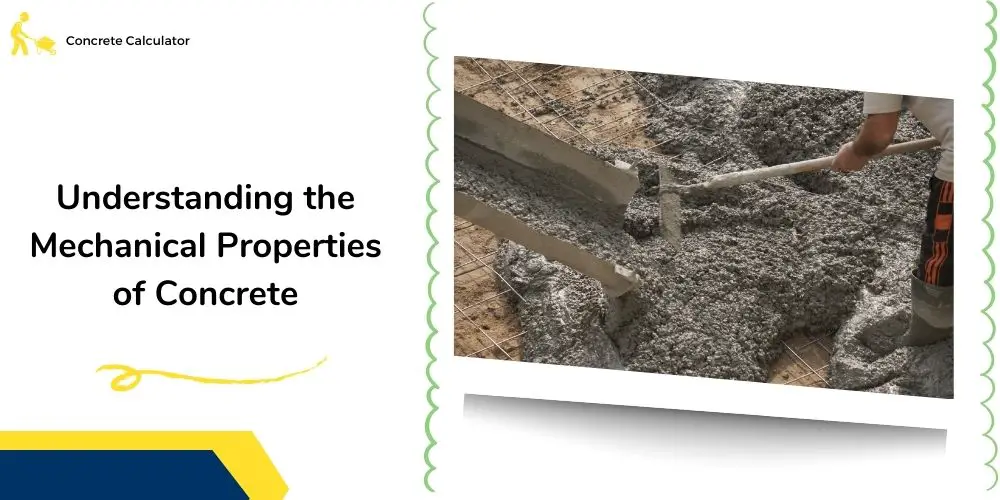Concrete, a versatile and widely used construction material, possesses remarkable mechanical properties that make it suitable for a wide range of applications. This article aims to provide a comprehensive overview of the mechanical properties of concrete, shedding light on its strength, durability, and other key characteristics.
From compressive strength to flexural strength, we will explore the essential aspects of concrete’s mechanical behavior, ensuring a better understanding of this vital construction material.

Properties of Concrete
1. Compressive Strength
One of the fundamental mechanical properties of concrete is its compressive strength. It measures the material’s ability to withstand compressive loads without failing. Concrete’s compressive strength is determined through standardized tests and is denoted by the amount of force required to fracture a given sample. This property plays a crucial role in structural design and is a primary consideration for engineers.
Also Check: Concrete Calculator
2. Tensile Strength
While concrete exhibits exceptional compressive strength, its tensile strength is relatively low. Tensile strength refers to a material’s ability to withstand tension or stretching forces without breaking. To overcome this limitation, reinforcing elements, such as steel bars or fibers, are often added to create reinforced concrete, which significantly enhances tensile strength. Reinforced concrete structures are commonly employed to resist bending and other tensile forces.
3. Flexural Strength
The flexural strength of concrete measures its ability to withstand bending forces. It is crucial for structures subjected to bending, such as beams and slabs. Similar to tensile strength, concrete’s inherent low flexural strength can be improved by incorporating reinforcement, resulting in reinforced concrete elements that efficiently distribute bending stresses and enhance structural performance.
4. Shear Strength
Shear strength refers to a material’s ability to resist forces that can cause internal sliding or rupture along parallel planes. While concrete exhibits reasonable shear strength, it is often enhanced by reinforcing techniques. For example, shear reinforcement in the form of stirrups or shear reinforcement fibers can be added to increase the material’s capacity to resist shear stresses, ensuring the integrity of structures under various loading conditions.

5. Durability
Concrete’s mechanical properties are closely tied to its durability, which is crucial for long-term performance. Durability encompasses resistance to environmental factors, such as freeze-thaw cycles, chemical attacks, and abrasion. Proper mix design, adequate curing methods, and appropriate use of supplementary cementitious materials contribute to enhancing concrete’s durability and extending its service life.
See Also: Concrete Damage Types
6. Elasticity and Creep
Concrete exhibits elastic behavior under low stress levels, meaning it returns to its original shape after the load is removed. However, under sustained loading, concrete experiences creep, which is the gradual deformation over time. Understanding the elastic and creep properties of concrete is vital for designing structures that can withstand long-term loads without excessive deformation.
Final Words On Concrete Properties
Concrete’s mechanical properties, including compressive strength, tensile strength, flexural strength, shear strength, durability, elasticity, and creep, collectively determine its performance and suitability for various construction applications. Engineers and designers rely on a comprehensive understanding of these properties to ensure the safe and efficient design of structures.
By continuously improving concrete mix designs, incorporating reinforcement, and implementing proper curing methods, the mechanical properties of concrete can be optimized, leading to resilient and long-lasting infrastructure.
Related Post: Is Concrete Toxic

